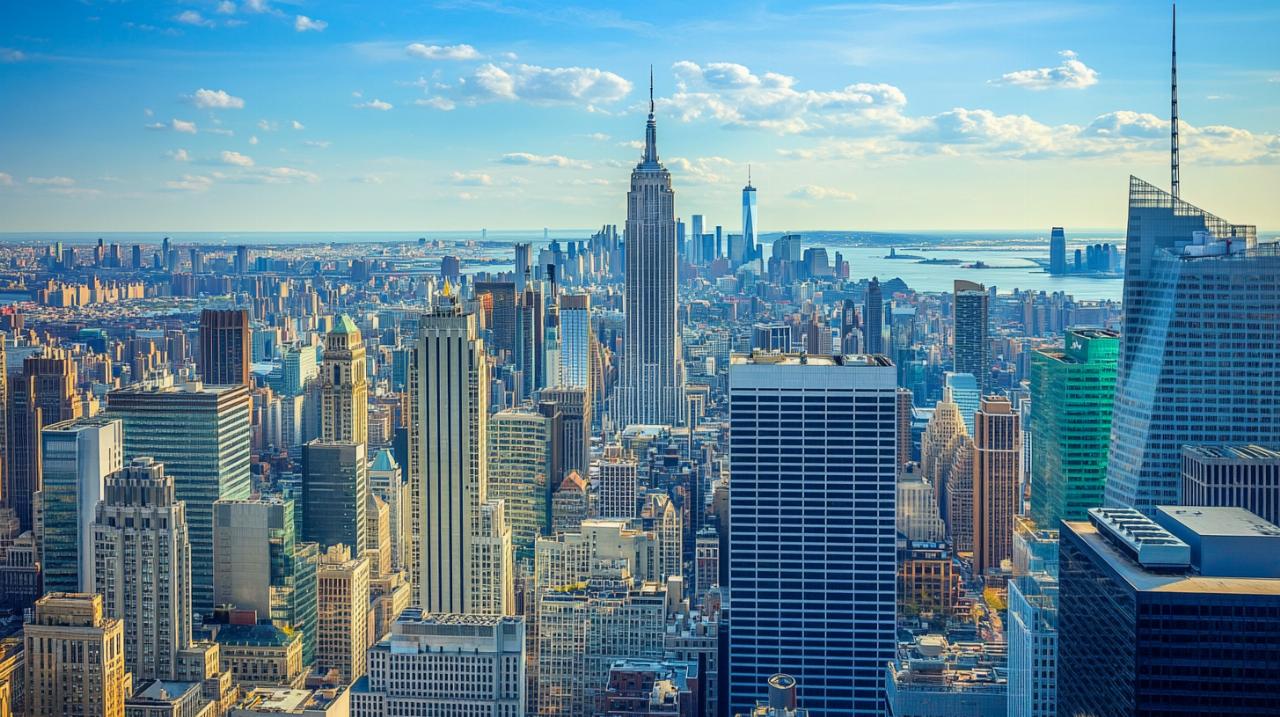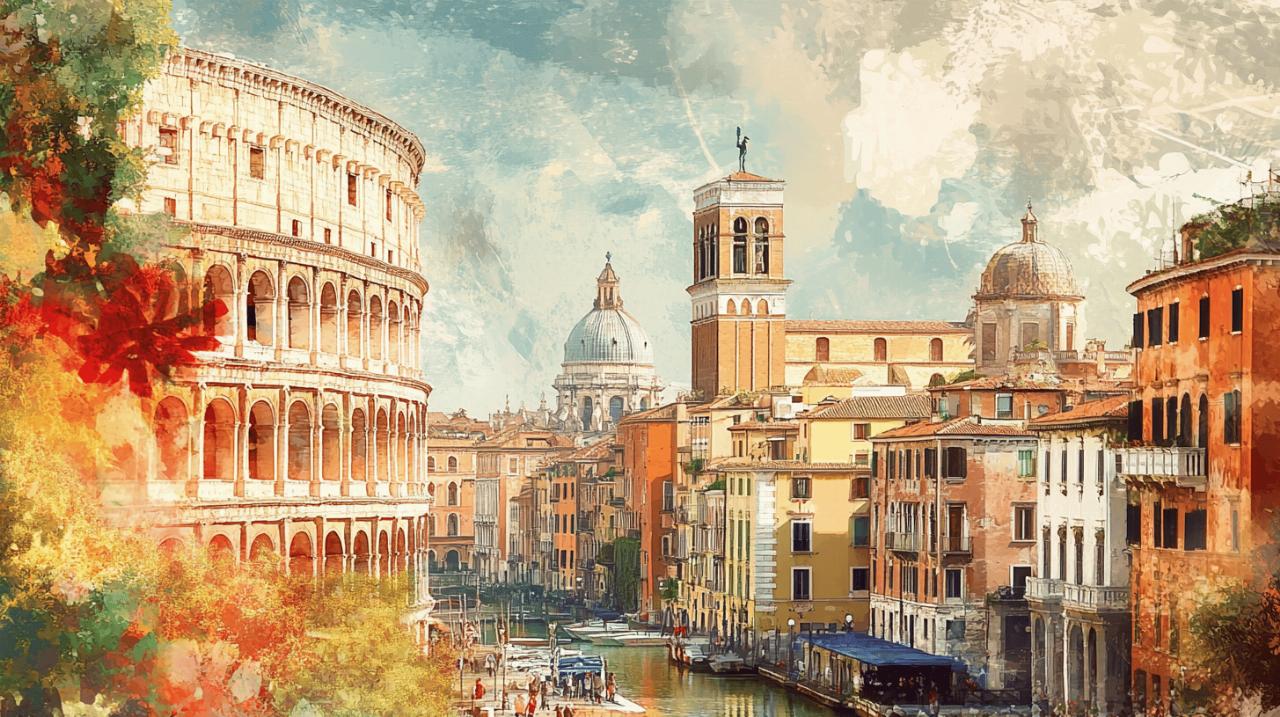Iconic manhattan marvels
New York City stands as a testament to human ingenuity, ambition, and artistic vision. The city's skyline, dotted with architectural masterpieces, tells the story of America's growth and resilience through the ages. Walking through the concrete canyons of Manhattan is like strolling through a living museum, where each building competes to reach higher into the sky and leave a more lasting impression on visitors.
The Grandeur of the Empire State Building
Standing majestically at 1,454 feet, the Empire State Building has defined the Manhattan skyline since its completion in 1931. This Art Deco masterpiece represents more than just architectural brilliance; it symbolises American optimism during the Great Depression. Constructed in just over a year—an astounding feat of engineering and human determination—the building offers visitors panoramic views from its observation decks on the 86th and 102nd floors. The Empire State Building transforms itself each night with colourful illuminations that celebrate holidays, causes, and significant events, creating a spectacle visible across the city.
Rockefeller center's timeless appeal
Rockefeller Center captures the essence of New York's vibrant energy within its 22-acre complex. This commercial hub, completed during the 1930s, stands as a testament to urban planning at its finest. The Center combines Art Deco design with modern functionality, hosting everything from the famous Christmas tree and ice-skating rink to NBC Studios. The complex features numerous sculptures and art installations that celebrate human progress and labour, including the golden statue of Prometheus overlooking the sunken plaza. The Top of the Rock observation deck offers what many consider the most spectacular view in Manhattan, as it includes the Empire State Building in its cityscape panorama.
Striking statues and memorials
Beyond its towering skyscrapers, New York City houses memorials and statues that connect visitors to pivotal moments in American history. These monuments serve as poignant reminders of the values, struggles, and triumphs that have shaped the nation's identity.
Lady liberty's enduring symbolism
The Statue of Liberty stands tall in New York Harbor, greeting visitors as she has since 1886. This copper colossus, designed by French sculptor Frédéric Auguste Bartholdi, was a gift from France celebrating American independence and friendship between the two nations. Standing 305 feet tall from ground to torch, Lady Liberty has welcomed millions of immigrants to American shores, becoming a universal symbol of freedom and opportunity. Her inscription, featuring Emma Lazarus's sonnet “TheNewColossus,” with its famous lines about “huddledmassesyearningtobreathefree,” continues to resonate in contemporary discussions about immigration and American identity.
The Poignant Simplicity of the 9/11 Memorial
The National September 11 Memorial presents a stark contrast to the city's ornate monuments. Two square reflecting pools occupy the footprints where the Twin Towers once stood, with water cascading down their sides into seemingly bottomless voids. The names of nearly 3,000 victims are inscribed on bronze parapets surrounding the pools, creating a deeply personal connection to the tragedy. The site combines contemplative design with powerful symbolism, allowing visitors to reflect on loss while witnessing resilience in the surrounding rebuilding efforts. The adjacent museum preserves artifacts, personal stories, and historical context of that fateful day, ensuring future generations understand its impact.
Architectural wonders across the boroughs
New York's monumental treasures extend beyond Manhattan, with each borough contributing distinctive landmarks to the city's architectural portfolio. These structures reflect different eras in the city's development and showcase diverse design philosophies.
Brooklyn bridge: a feat of victorian engineering
The Brooklyn Bridge stands as perhaps the most beautiful of all New York City's bridges, with its distinctive Gothic arches and intricate cable patterns creating a silhouette recognised worldwide. Completed in 1883, this engineering marvel was the longest suspension bridge of its time and the first to use steel cables. The bridge represents a poignant human story as well—its chief engineer, John Roebling, died before construction began, leaving his son Washington to oversee the project. When Washington suffered debilitating decompression sickness, his wife Emily assumed day-to-day management, becoming an early pioneer for women in engineering. Today, the pedestrian walkway offers spectacular views of Manhattan and Brooklyn, making it both a practical crossing and a romantic promenade.
The guggenheim's revolutionary design
The Solomon R. Guggenheim Museum challenges conventional notions of museum architecture with its distinctive spiral design. Created by Frank Lloyd Wright and completed in 1959, the building itself is often considered as significant as the artworks it houses. The interior features a continuous ramp that spirals upward around an open central space, creating a unique viewing experience where visitors descend through the exhibition rather than walking from room to room. Wright's vision was to create a “templeofthespirit” where people could experience art in a setting that itself represented artistic innovation. The stark white exterior stands in dramatic contrast to the traditional buildings surrounding it on Fifth Avenue, making a bold statement about modern art's place in urban culture.
Hidden gems off the tourist trail
While New York's iconic monuments draw millions of visitors annually, the city also harbours lesser-known treasures that reward those willing to venture beyond standard itineraries. These hidden gems offer glimpses into New York's multifaceted history and provide more intimate encounters with the city's heritage.
The little red lighthouse under the george washington bridge
Tucked beneath the massive steel structure of the George Washington Bridge sits the charming Little Red Lighthouse, officially named Jeffrey's Hook Light. This 40-foot-tall structure dates back to 1880 and was moved to its current location in 1921 to guide ships through the treacherous waters of the Hudson River. When the George Washington Bridge opened in 1931, its powerful lights rendered the lighthouse obsolete. The contrast between the tiny lighthouse and the colossal bridge overhead creates a striking visual narrative about technological progress. The lighthouse gained fame through the children's book “TheLittleRedLighthouseandtheGreatGrayBridge” and was saved from demolition by public outcry, demonstrating how even small monuments can capture the public's imagination and affection.
Grant's tomb: manhattan's overlooked mausoleum
General Ulysses S. Grant's Tomb in Riverside Park represents one of America's most significant memorials that somehow remains overlooked by many visitors to New York. This imposing granite and marble structure, completed in 1897, is the largest mausoleum in North America and houses the remains of the Civil War general and 18th U.S. President, alongside his wife Julia. The classical design draws inspiration from ancient mausoleums like Halicarnassus and features impressive mosaic murals depicting Grant's military campaigns. Despite once being the most visited attraction in New York City, with over 600,000 annual visitors in the early 20th century, it now offers a peaceful retreat from the city's bustling tourist centres while providing an important connection to American history.
Modern masterpieces and cultural icons
New York City stands as a living museum of architectural brilliance, where skyscrapers reach for the clouds and public spaces tell stories of the city's rich heritage. Beyond the classic silhouette of the Empire State Building and the verdant expanse of Central Park, the city's modern monuments continue to reshape its iconic skyline. These contemporary landmarks not only serve as tourist magnets but embody the spirit, resilience, and creative vision that defines the Big Apple.
From repurposed industrial relics to soaring towers born from tragedy, New York's newer monuments offer visitors and locals alike spaces for reflection, inspiration, and community gathering. These structures have quickly become essential pieces of New York's cultural fabric, drawing millions who wish to experience the city's ongoing architectural renaissance.
The high line: industrial history reimagined
Once an abandoned railway track destined for demolition, the High Line now stands as one of New York's most innovative public spaces. This elevated linear park stretches 1.45 miles along Manhattan's West Side, offering a peaceful respite from the bustling streets below. The transformation of this industrial relic into a lush urban garden showcases how neglected spaces can be brilliantly reimagined.
Walking along the High Line, visitors meander through carefully curated plantings inspired by the wild vegetation that originally reclaimed the disused railway. The design thoughtfully preserves railway tracks in certain sections, weaving them amongst native grasses and perennials. The park not only provides stunning views of the Hudson River and Manhattan skyline but has catalysed the revitalisation of surrounding neighbourhoods, with striking new buildings by renowned architects now lining its path.
The High Line represents a remarkable shift in urban thinking – rather than erasing the industrial past, it celebrates it, creating a uniquely New York experience that honours the city's railway heritage while providing a thoroughly modern public amenity.
One world trade center: a symbol of resilience
Rising 1,776 feet above Lower Manhattan, One World Trade Center stands as both an architectural marvel and a powerful symbol of New York's indomitable spirit. The height, deliberately chosen to evoke the year of American independence, makes it the tallest building in the Western Hemisphere and a defining feature of the city's skyline.
The tower's design balances grandeur with respectful remembrance. Its prismatic glass façade catches and reflects the changing light throughout the day, while its clean geometric form tapers elegantly skyward. The building's base sits on a 185-foot concrete pedestal, creating a solid foundation that speaks to the city's strength.
Visiting One World Trade Center offers more than architectural appreciation. The observatory on the 100th, 101st, and 102nd floors provides breathtaking 360-degree views of New York and beyond. Yet despite its soaring height, the building maintains a profound connection to the ground below, where the 9/11 Memorial's twin reflecting pools mark the footprints of the original Twin Towers.
This remarkable structure exemplifies how a monument can simultaneously look forward and honour the past. It stands not merely as a commercial skyscraper but as a testament to New York's ability to rebuild, reimagine, and rise again.






